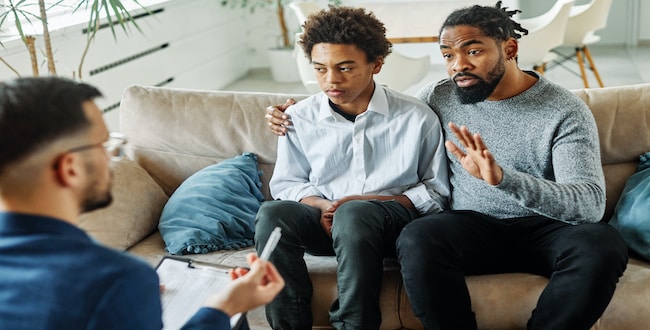Monkeypox – What You Need To Know
Along with the COVID-19 pandemic, news of another disease has made headlines. Cases of “monkeypox” have been appearing in unusual regions worldwide, including the United States. Medical experts aren’t entirely sure why it’s happening yet, but early data suggests a connection with recent sexual contact. Here’s what medical experts say about monkeypox and what you need to know about the outbreaks.
What is Monkeypox?
Monkeypox is a rare disease within the smallpox family. This family resides in the Orthopoxvirus genus and is known by its scientific name, Poxviridae. Its name derives from when the disease was first discovered in 1958 among a colony of monkeys. The research was recorded and kept for future use until the first human case of monkeypox appeared in 1970 in the Democratic Republic of the Congo (DRC).
Monkeypox is a zoonotic virus or a disease spread from animals to humans. Monkeypox has traditionally been reported in cases within central and West African countries.
Cases in the United States are rare and usually occur after international travel or from imported animals. In May of 2022, health officials reported an outbreak of monkeypox in several areas outside of Africa.
Monkeypox Origins
Origins of monkeypox date back to 1958, when researchers noticed a pox-like illness appearing in monkeys kept for research. The first human case of monkeypox appeared in 1970 during a period of determination to eliminate smallpox.
Since then, cases of monkeypox have been reported in the Central African Republic, Cameroon, Cote d’Ivoire, Gabon, Democratic Republic of Congo, Republic of the Congo, Nigeria, Liberia, and Sierra Leone.
Although rare, cases of monkeypox have also been reported in the United States, the United Kingdom, Singapore, and Israel. As of now, the virus doesn’t solely come from monkeys, although it’s possible. Cases of Monkeypox may come from other primates, squirrels, and small rodents in African rainforests.
Transmission
Since it’s a zoonotic virus, most cases of monkeypox derive from animal to human contact. This can occur when an animal bites or scratches you. It can also happen if you come in contact with an infected animal’s blood, pox lesions, or other bodily fluids. In some cases, you can even contract it from consuming uncooked contaminated meat.
Even so, transmission can occur between people. This typically happens when you come into close contact with an infected person. Contacting infected bodily fluids like blood or semen can give you monkeypox.
You can also get it by breathing in respiratory droplets and through contact with monkeypox lesions and although rare, getting monkeypox by contacting clothing or bedding with traces of infected bodily fluids is possible.
Symptoms
Symptoms of monkeypox are typically delayed, but one should expect them to appear about 1-2 weeks after exposure to the virus. It may even take as long as three weeks for a person to notice symptoms. Monkeypox is less severe than smallpox and starts with flu-like symptoms:
- Fever and chills
- Headache
- Fatigue
- Muscle aches
- Swollen lymph nodes
- Dry cough
- Backache
- Sore throat
- In serious cases, trouble breathing
After 1-3 days of flu-like symptoms, a rash with raised bumps develops on the skin. Locations of the rash vary by case, but it’s most commonly found on the face before making its way to the hands, arms, legs, and feet.
The rash will start as red, flat bumps before turning into pus-filled blisters. Once a few days have passed, the blisters eventually crust over and fall off.
Risk Factors
Currently, no particular groups of people are more at risk of developing monkeypox. The WHO currently labels it as a low-risk health issue unless the virus becomes a widespread human pathogen.
Even so, they are approaching it as moderate global health concern since recent cases have been reported in unusual areas of the world.
The World Health Organization is also working towards discovering if there’s a connection between sexual contact and monkeypox. It’s not classified as an STI since it can be transmitted through other contact forms. However, newly affected regions of the world have attributed many cases to recent sexual contact.
Is it Serious?
Monkeypox is considered less serious than smallpox, but it can be very severe in some cases. This is particularly true for children, people with underlying health conditions, or individuals with suppressed immune systems. In more severe cases of monkeypox, thousands of lesions develop together, resulting in the loss of a large area of skin at once.
Overall, 10% of monkeypox cases become fatal. Even so, many deaths associated with monkeypox occur in areas without adequate healthcare. More severe monkeypox cases usually happen due to complications associated with the disease. Examples include encephalitis, bronchopneumonia, sepsis, and vision loss related to cornea infection.
Diagnosis
Due to its rarity in the United States, doctors are more likely to test you for other related diseases/conditions like chickenpox, measles, syphilis, allergies, or even smallpox. Even so, monkeypox has one distinguishing symptom that separates it from the rest of its family of viruses: swollen lymph nodes.
Once your doctor rules out the other related viruses in its family, they’ll take a tissue sample and observe it under a microscope. They may also request a blood sample to search for signs of the monkeypox virus or increased antibodies signaling the body’s fight against the disease. Once all potential diseases are ruled out, they’ll diagnose you with monkeypox.
Treatment
Unfortunately, there’s no definitive treatment method for monkeypox. Since it’s a virus, it will be ineffective to treat monkeypox with antibiotics. Antiviral medications can help, but they aren’t a well-studied monkeypox treatment option. Instead, your doctor’s primary goal will be to make you feel as comfortable as possible while your body fights off the virus.
The good news is that most people fully recover once their symptoms subside. As an additional silver lining, you’re much less likely to contract monkeypox if you’ve gotten your smallpox vaccine.
If you’re already exposed to the virus before receiving a smallpox vaccination, getting a shot four days after exposure may significantly reduce symptoms of monkeypox.
Prevention
Decreased contact with infected animals and people is key to preventing monkeypox. Smallpox vaccines are also an option, but essential for lab workers with exposure to the variola virus.
However, recent monkeypox outbreaks in the United States make it necessary to stay aware of new cases in your area. Here are a few ways to prevent monkeypox:
- Avoid coming into contact with infected animals
- Separate people or animals who are at a higher risk of infection
- If you do come into contact with an infected animal, wash your hands thoroughly with soap and water
- Completely cooking any foods containing animal meat
- Avoid contact with bedding or other materials used by an infected animal or a person with monkeypox
- If you have to be close to an animal or person with monkeypox, wear protective gear like masks, gloves, and safety goggles or glasses. Also, wash your hands regularly and thoroughly.
What to Know About the Monkeypox Outbreak
Since May 13th, 2022, four regions have reported unusual monkeypox outbreaks to the WHO, including the United States. According to medical experts, epidemiological investigations are still ongoing to pinpoint the cause of these outbreaks.
However, they’ve noticed connections between newly affected regions and recent sexual contact. There have also been cases among people in health care facilities on international trips.
The sudden onset of monkeypox outbreaks suggests that transmission of the virus was likely undetected for several weeks. The WHO is classifying the outbreaks as moderate since the virus appears in unusual regions worldwide.
Even so, the WHO recommends that people stay aware of symptoms and updates as more information is learned about the outbreaks. Here are five summer health tips for the family.






